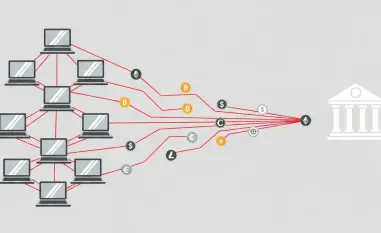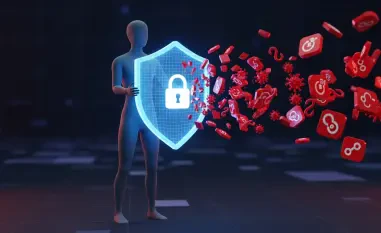In the ever-evolving landscape of cybersecurity, traditional file types commonly believed to be safe are becoming potential liabilities as hackers find new avenues to exploit. Portable Network Graphics (PNG) files, widely respected for their high-quality image output and lossless compression, are now under the scrutiny of cybersecurity experts for their potential vulnerabilities. Once considered innocuous, these files have lately become repositories of hidden threats, capable of infiltrating systems without immediate detection. This unexpected development is shifting the focus of security protocols to include seemingly mundane digital artifacts.
Fundamentally, PNG files were designed to provide superior image quality without any loss of data, making them a staple in digital communication, web design, and various forms of media. However, this level of sophistication in handling complex image data has inadvertently made them appealing to cybercriminals. Through intricate manipulations, these files can be embedded with malicious code that—when opened—can execute a range of harmful actions, such as data theft or system disruption.
The increasing awareness of these issues has led to more rigorous examinations of digital graphics formats. With the aid of tools like the Common Vulnerabilities and Exposures (CVE) database, experts are gaining deeper insights into how hackers exploit these files. This marks a significant shift in the understanding of digital file security, prompting a reevaluation of even the most basic cyber safety measures. The ability to identify and predict these vulnerabilities enables more robust defenses, ensuring organizations are better prepared against these unexpected threats.
How PNG Files Become Cyber Vulnerabilities
The core issue with PNG files lies in their ability to encode complex data streams, a feature that can be manipulated to carry malicious scripts. When these corrupt files are activated, they can disrupt system operations, steal sensitive data, or introduce malware into otherwise secure environments. The inclusion of such code can evade traditional security measures, requiring more sophisticated techniques for detection and prevention. This calls for an enhanced understanding of how seemingly harmless image files can transform into significant security risks.
PNG files’ vulnerability to manipulation has drawn cybercriminals’ attention, making them a popular target for embedding harmful codes. With considerable volumes of data embedded within these files, it becomes easier for malicious actors to code harmful scripts designed to execute when the file is opened. This development has led to a growing number of cybersecurity incidents linked to compromised PNG files, challenging the efficacy of existing security measures and protocols.
The role of the CVE database is invaluable in this context. By cataloging known vulnerabilities, it allows security professionals to pinpoint specific weaknesses in the PNG format. This information facilitates the development of more targeted protection strategies and helps in the timely patching of these vulnerabilities. Through systematic analysis and reporting, the CVE database has become an essential tool for staying ahead of cyber threats, ensuring that defense mechanisms evolve in response to emerging issues.
The Role of Advanced Analysis Technologies
Advancements in technology are equipping security experts with new tools to analyze and compare CVEs related to PNG files. These novel technologies can identify specific vulnerabilities by examining the file type’s structure and behavior. Such capabilities are essential for devising more comprehensive cybersecurity strategies that preemptively tackle these novel threats. As digital forensic tools become more sophisticated, the ability to detect and neutralize embedded malicious scripts within PNG files significantly improves.
Emerging technologies enable a more granular understanding of how PNG files can be exploited. Machine learning algorithms, for instance, can be deployed to recognize anomalous patterns that indicate tampered files. These technologies facilitate quicker and more accurate identification of threats, allowing for immediate countermeasures. By incorporating these advanced methods, security protocols can be more proactive, rather than reactive, in addressing the potential risks presented by PNG files.
The integration of automated tools like AI-driven anomaly detection systems marks a significant leap forward in cybersecurity. These systems are capable of monitoring vast amounts of data in real time, identifying threats that would otherwise go unnoticed. As a result, security measures are becoming more intuitive and less reliant on manual oversight. This shift not only enhances the efficacy of threat detection but also frees up resources to focus on more strategic aspects of cybersecurity.
Practical Security Tips for Handling PNG Files
To mitigate the risks associated with PNG files, several practical security measures can be implemented. Firstly, keeping all software used to open and process PNG files up-to-date is crucial. Software developers often release patches to address known vulnerabilities; thus, regular updates are vital. Secondly, educating and training employees to recognize and avoid suspicious files or links can significantly reduce the likelihood of falling victim to these exploits. Awareness campaigns and training sessions are effective methods to strengthen the first line of defense against cyber threats.
In addition to software updates and training, utilizing robust antivirus and anti-malware solutions is essential. These tools can scan PNG files before they are accessed, identifying and neutralizing potential threats. Implementing sandboxing techniques, where unknown files are opened in a controlled environment, further reduces the risk of system compromise. By confining the possible effects of a suspicious file to a restricted area, it becomes easier to monitor and neutralize malicious actions without jeopardizing the main system.
The Future of PNG File Security
In the dynamic world of cybersecurity, files once thought safe are now becoming risky as hackers discover new ways to exploit them. Portable Network Graphics (PNG) files, renowned for their high-quality images and lossless compression, have caught the attention of cybersecurity experts due to their potential vulnerabilities. Previously deemed harmless, these files have recently become carriers of hidden threats, capable of breaching systems without immediate detection. This unforeseen issue is shifting security protocols to include even the most mundane digital files.
PNG files were originally designed to deliver high-quality images without losing data, making them essential in digital communication, web design, and various media forms. However, this very sophistication in handling complex image data has inadvertently attracted cybercriminals. By manipulating these files, attackers can embed malicious code that, when executed, can lead to data theft or system disruption.
Heightened awareness of these risks has led to stricter examinations of digital graphics formats. With tools like the Common Vulnerabilities and Exposures (CVE) database, experts are gaining better insights into how these files can be exploited. This has significantly changed the understanding of digital file security, prompting a reevaluation of basic cybersecurity measures. Identifying and predicting these vulnerabilities enables stronger defenses, ensuring organizations are better equipped to handle these new threats.













